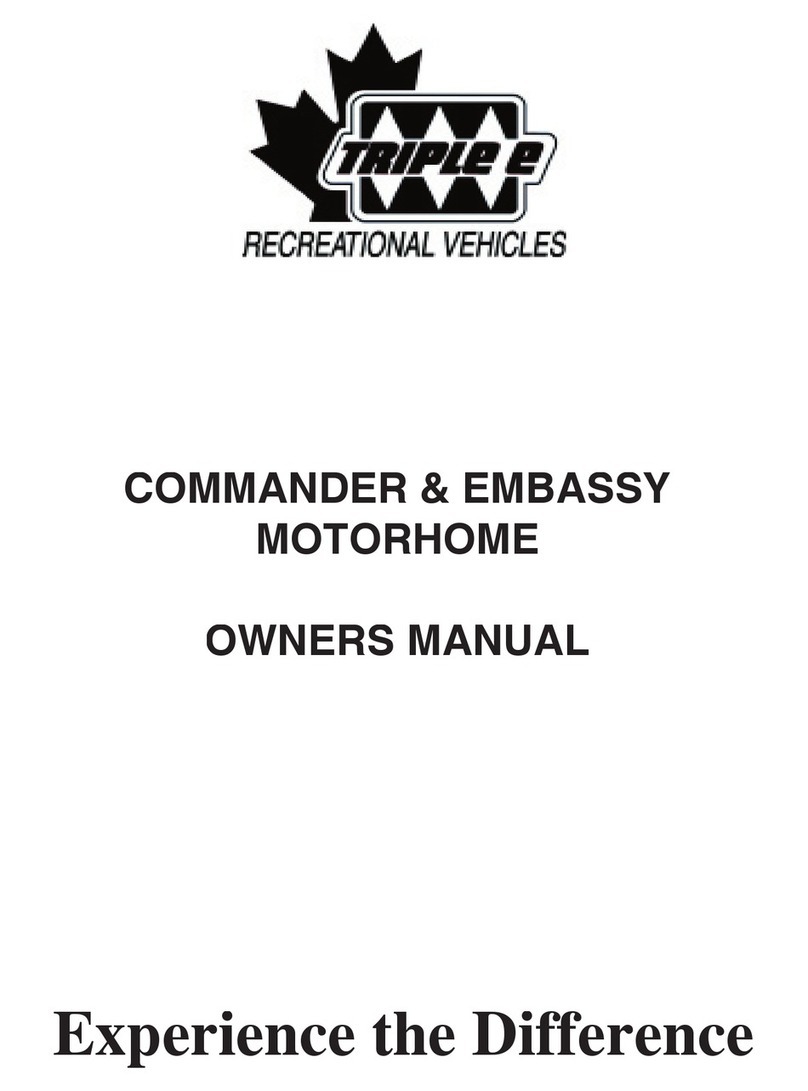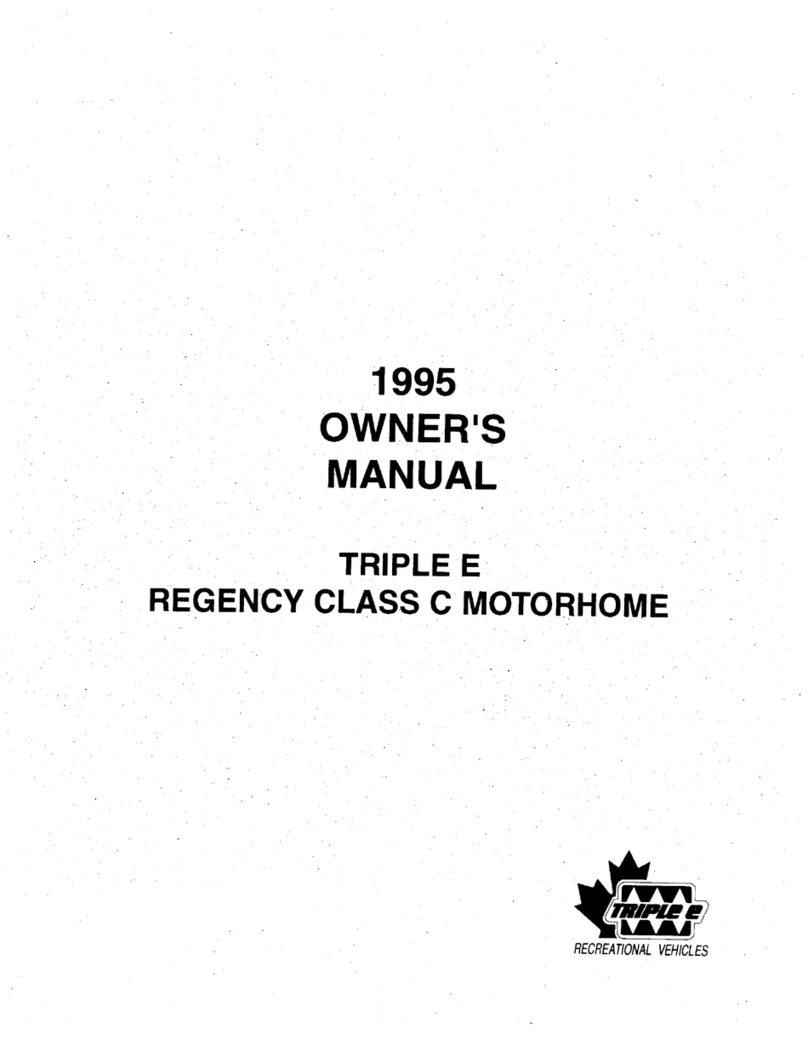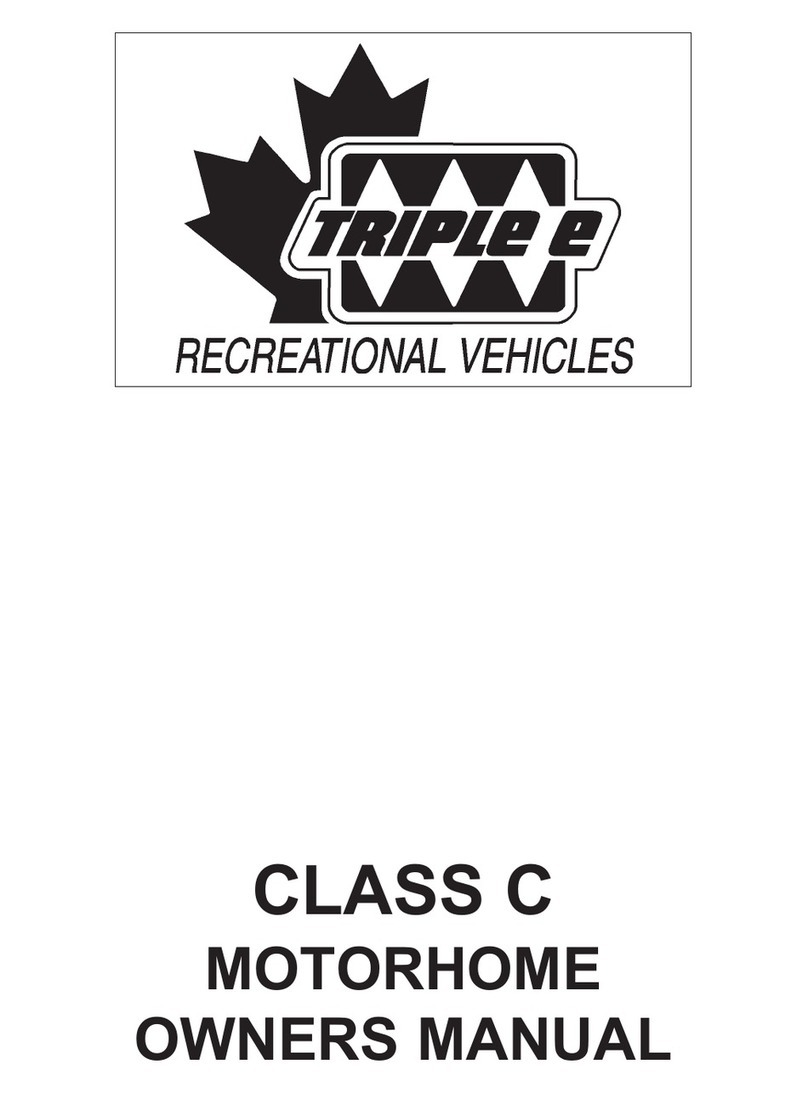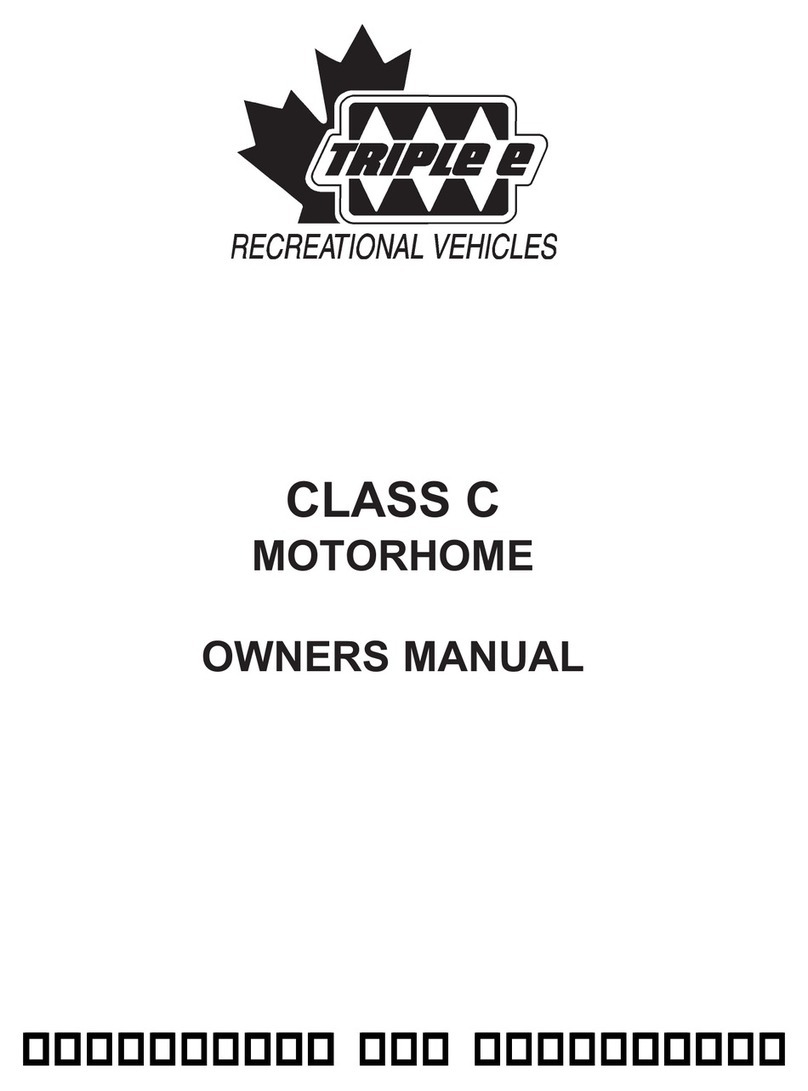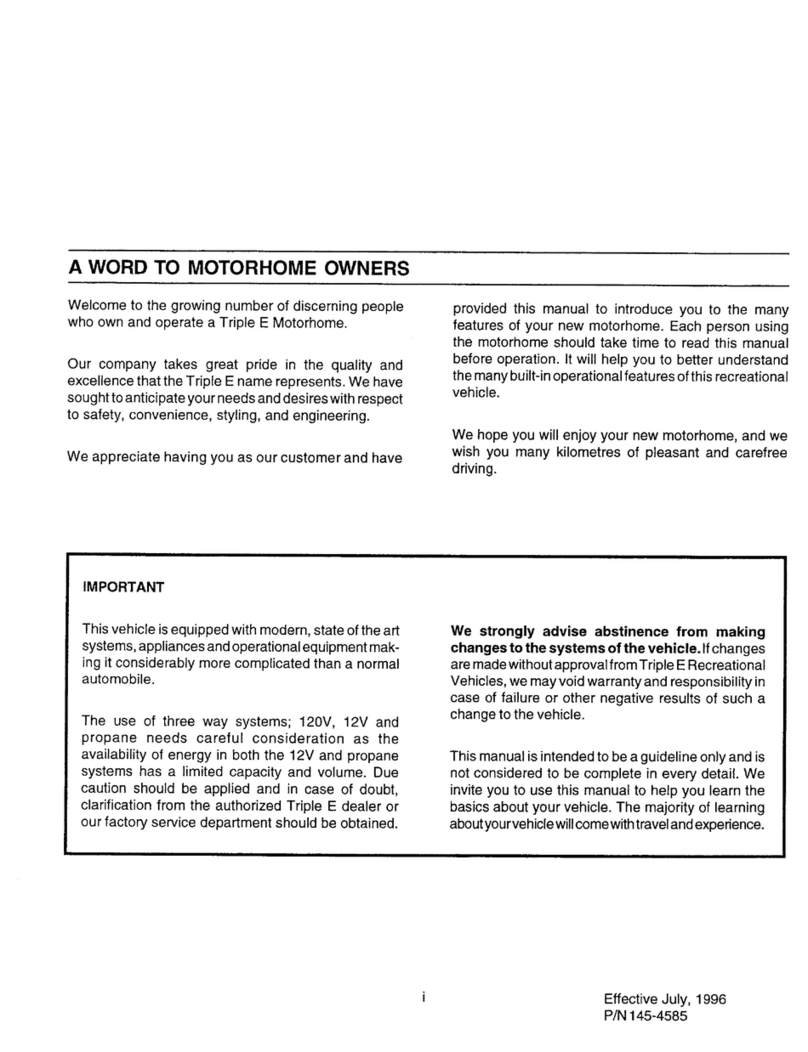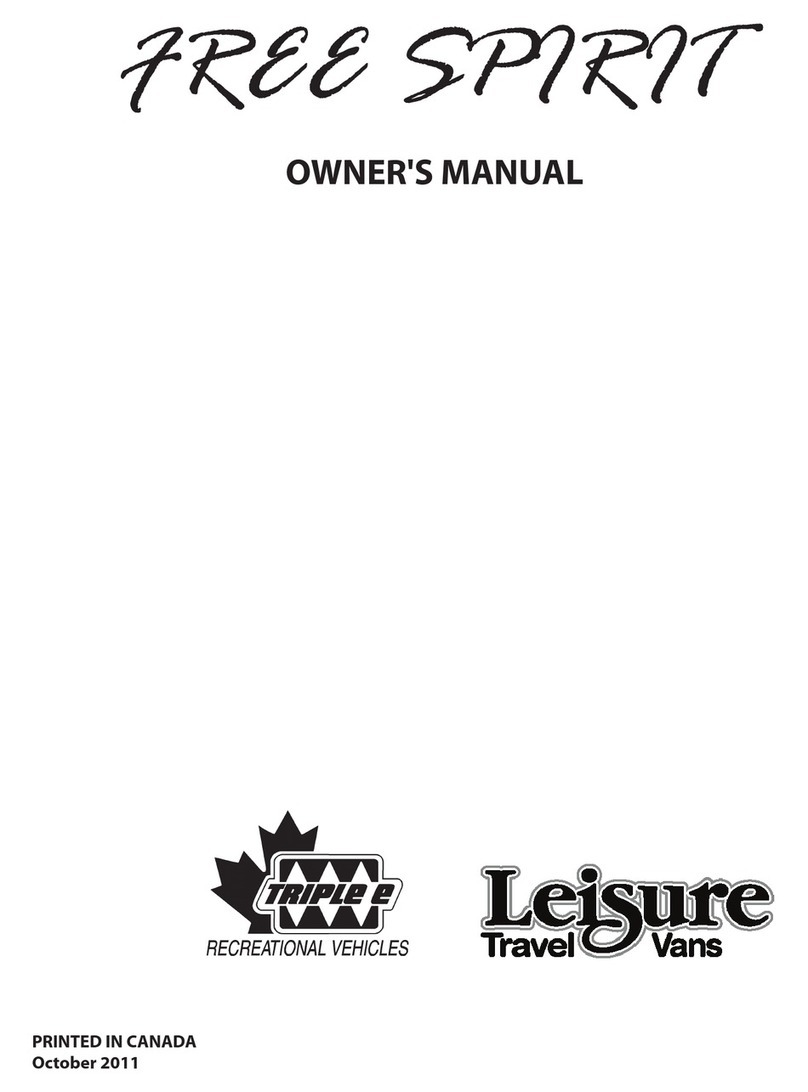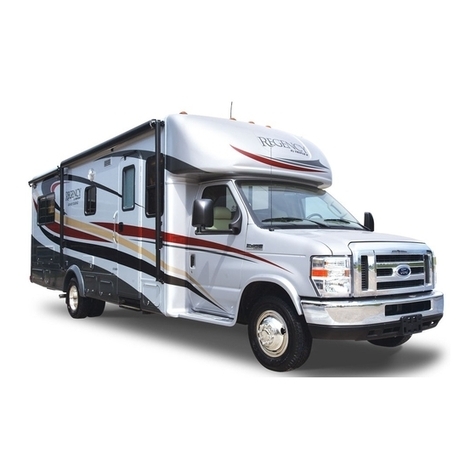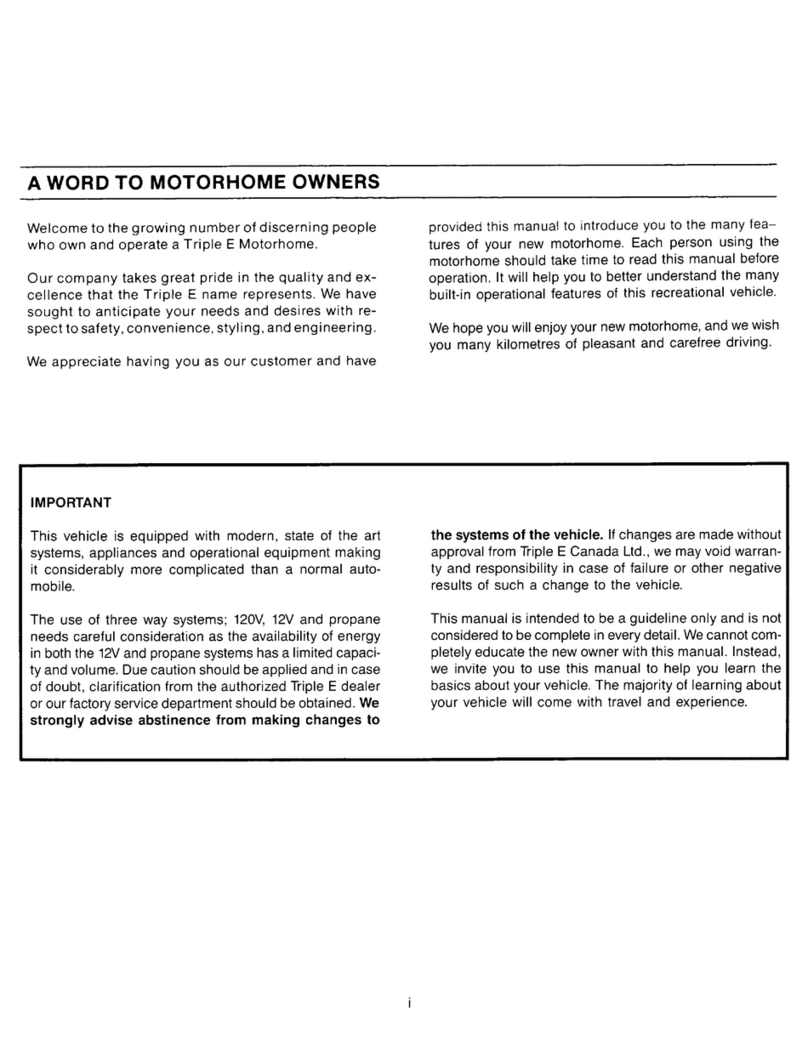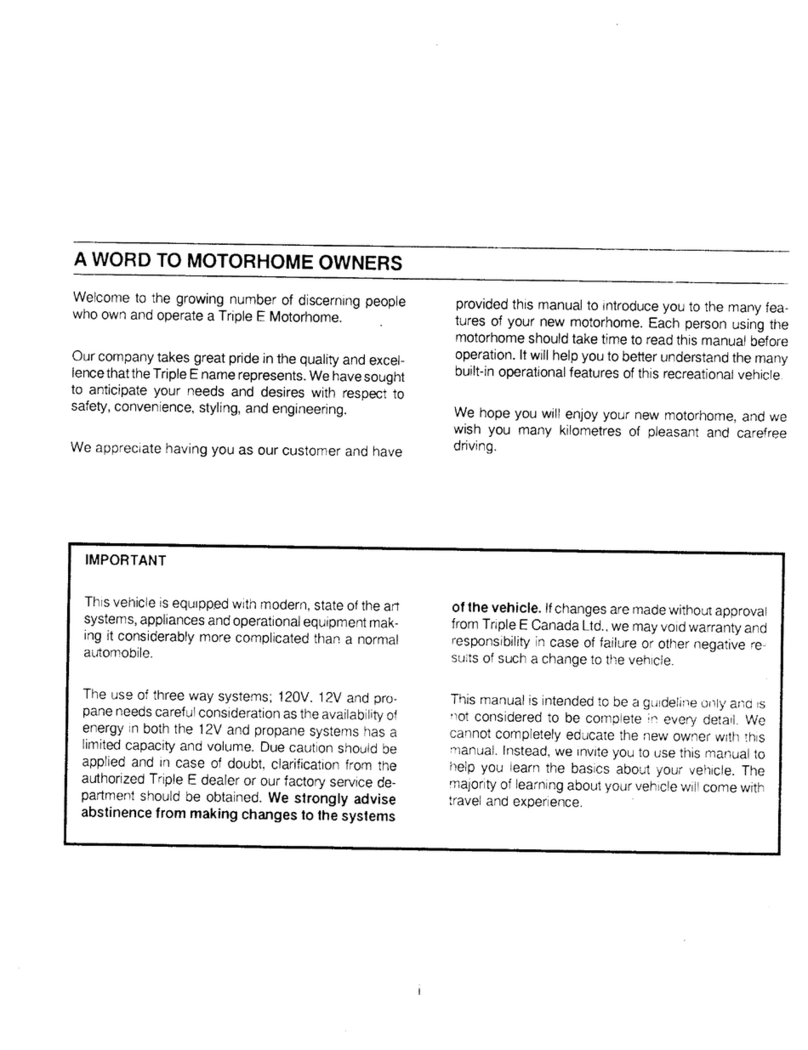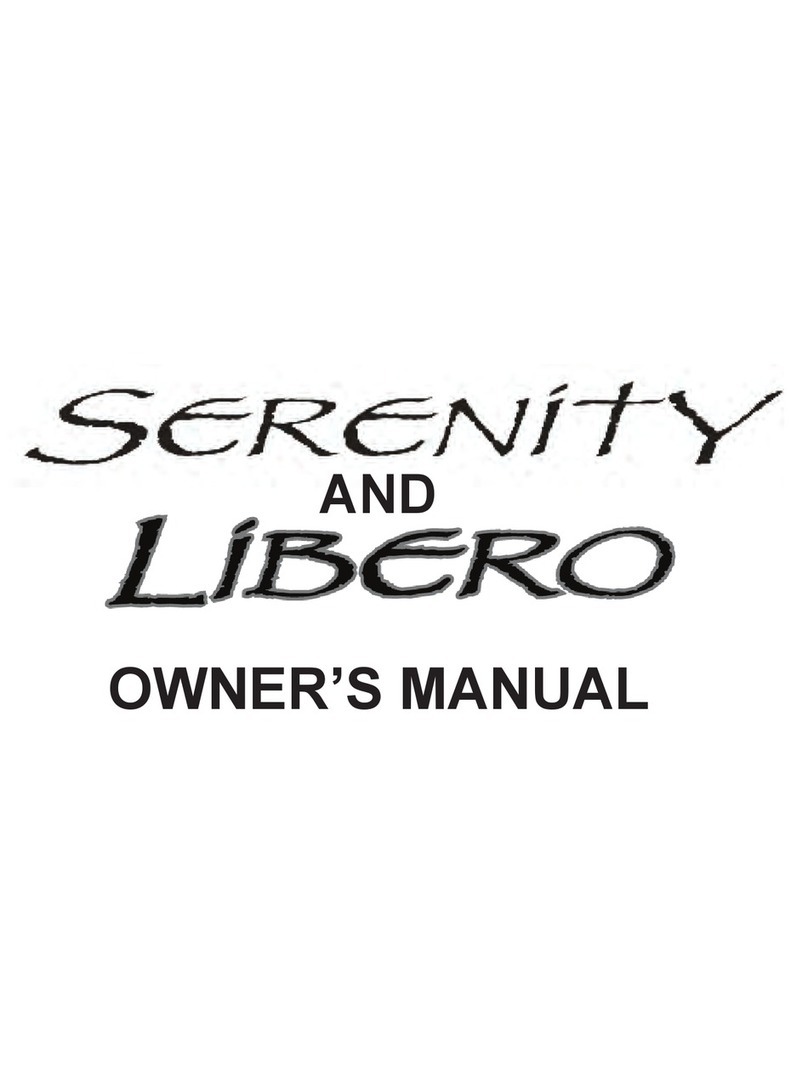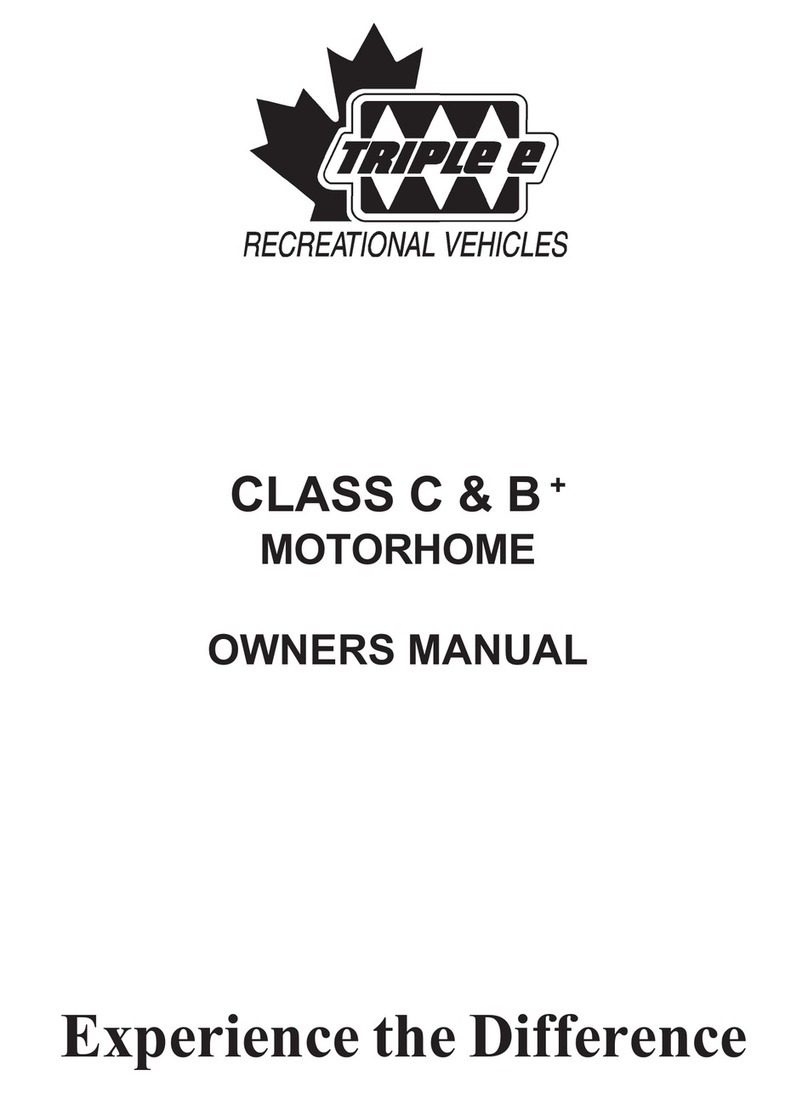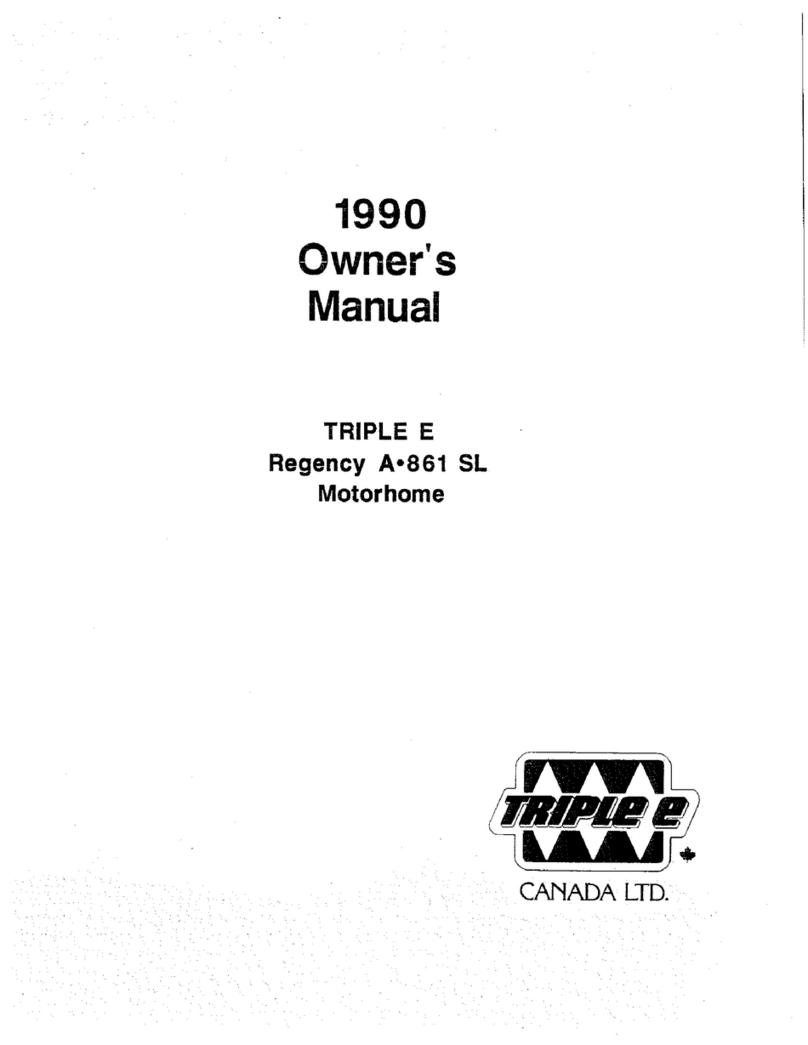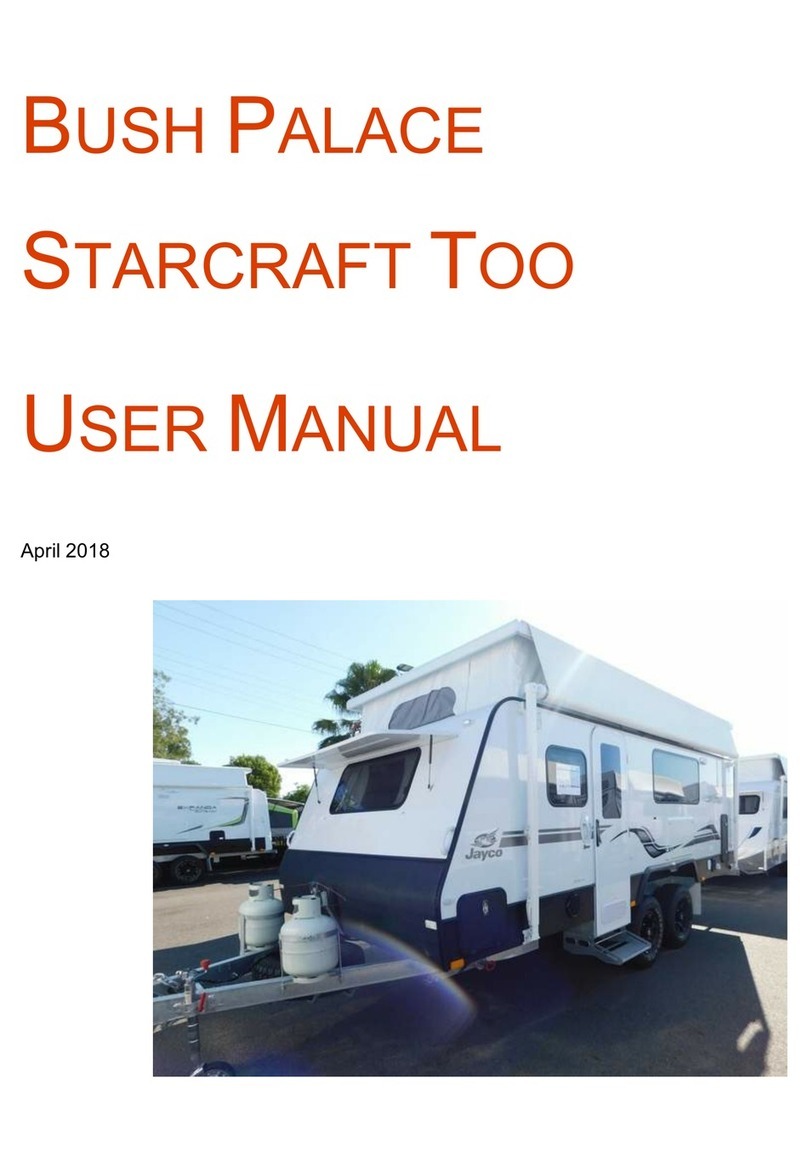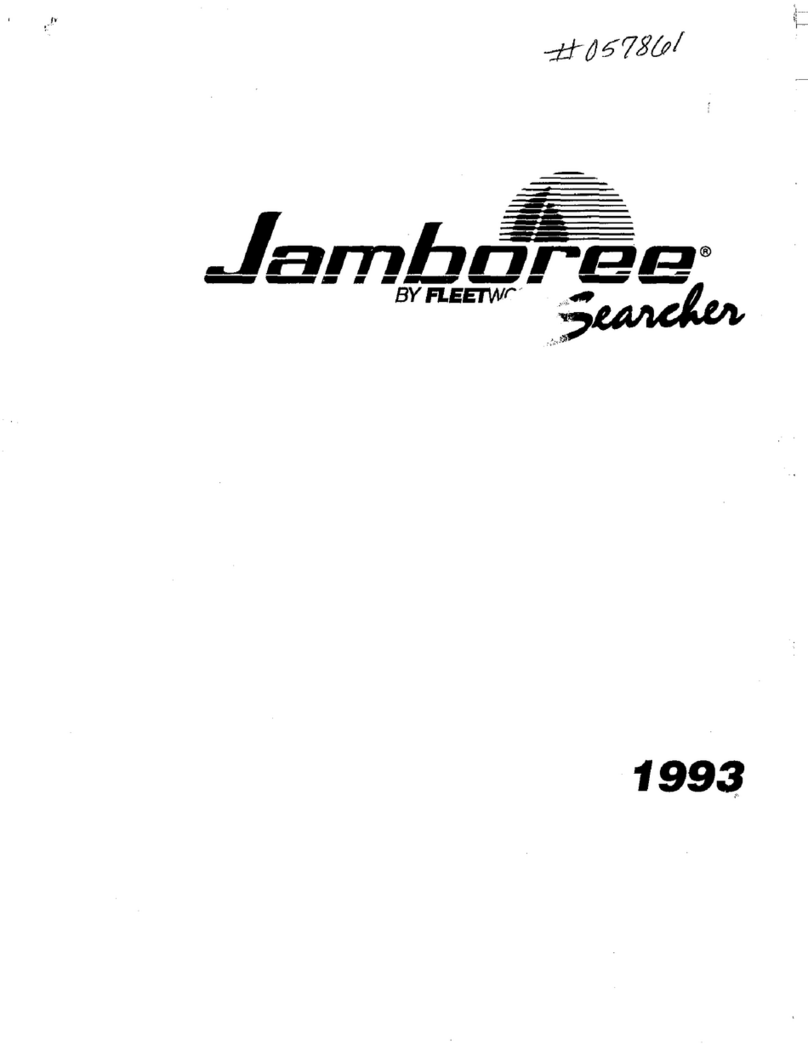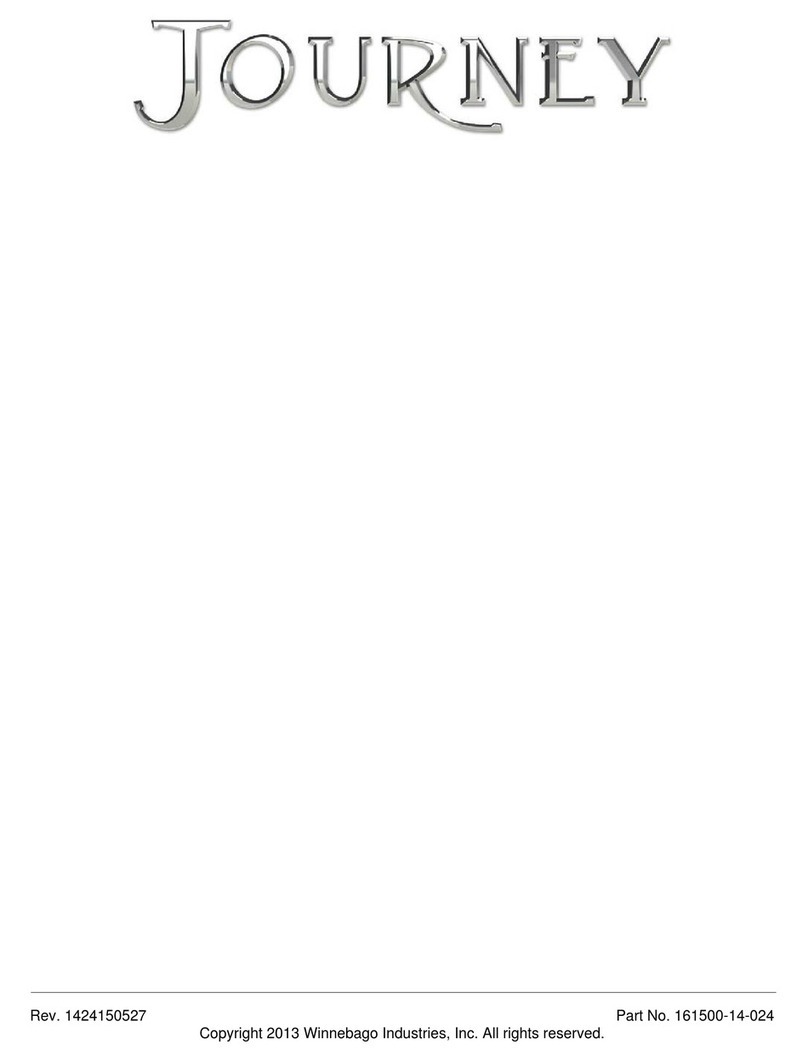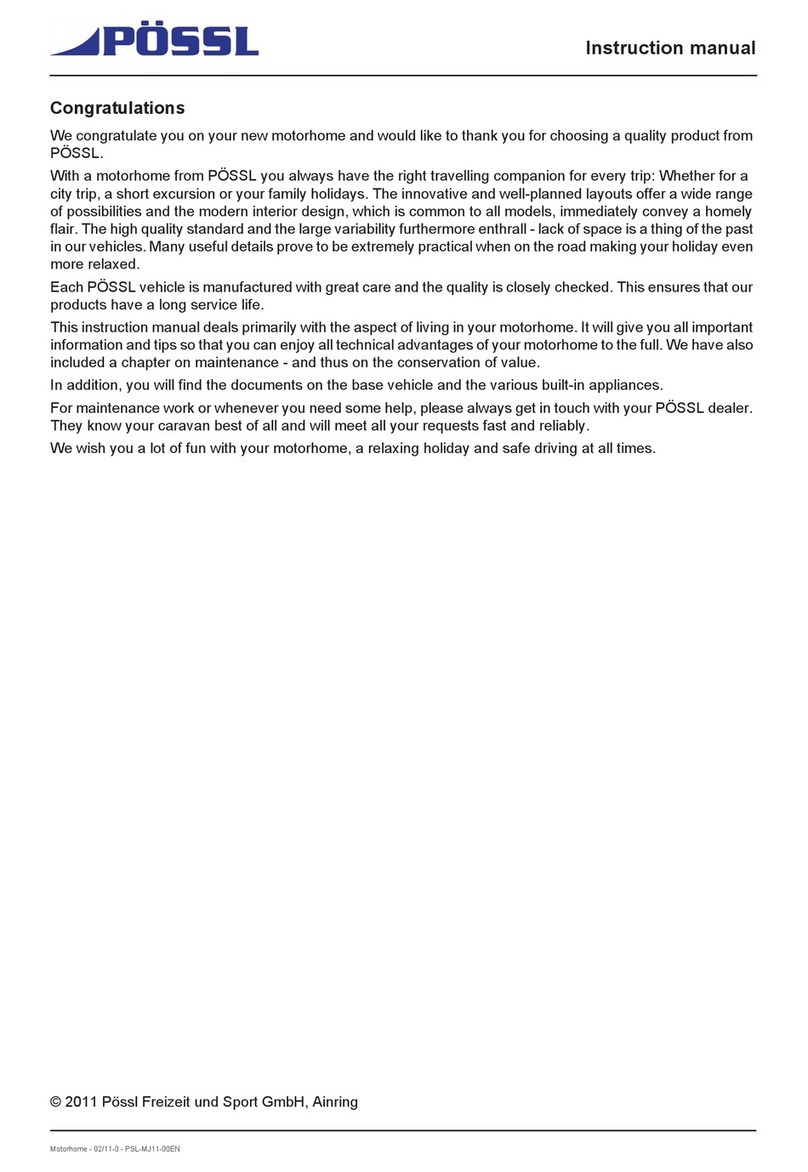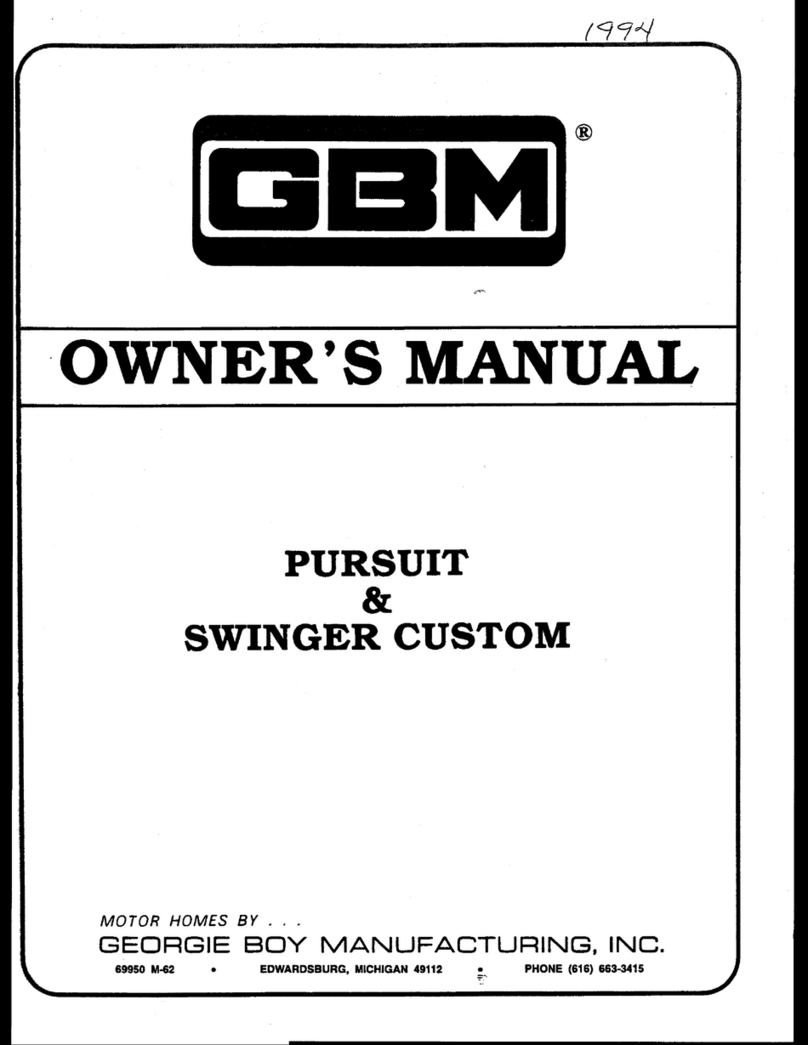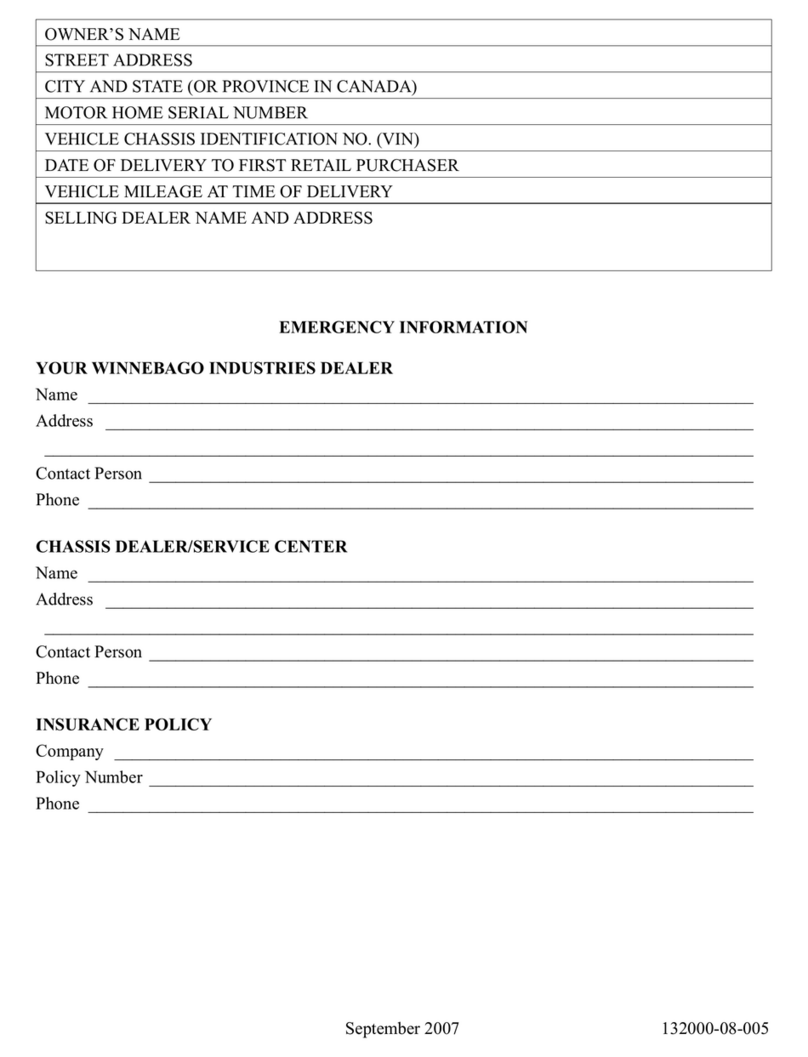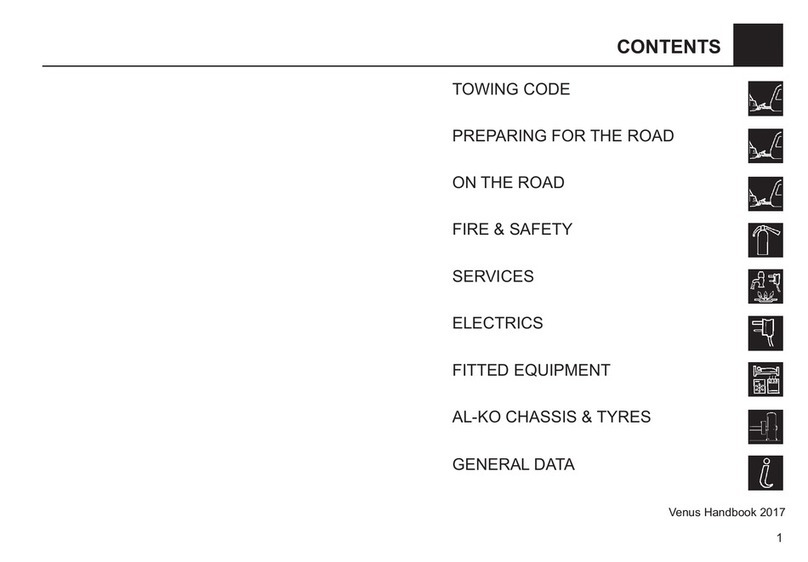
TABLE OF CONTENTS
SECTION DESCRIPTION PAGE SECTION DESCRIPTION PAGE
11 LP Gas System.......................................................... 11-1
11.1 Safe Use of LP Gas.................................... 11-1
11.2 How LP Gas Works.................................... 11-1
11.3 Selecting Fuel Types................................ 11-2
11.4 LP Tank System.......................................... 11-2
11.5 LP Tank Capacity....................................... 11-2
11.6 Relling LP Tank........................................ 11-3
11.7 Air in the LP Tank ...................................... 11-4
11.8 Travelling LP Gas....................................... 11-4
11.9 Regulator..................................................... 11-4
11.10 LP Gas Leaks............................................... 11-5
11.11 LP Gas Detector ........................................ 11-5
12 Water/Plumbing System ......................................... 12-1
12.1 Fresh Water System ................................. 12-1
12.1.1 Fresh Water Tank Filling
Procedure.................................................... 12-2
12.1.2 Water Pump................................................ 12-2
12.1.3 Water Pump Switch ................................. 12-3
12.1.4 Water Pump Filter..................................... 12-4
12.1.5 Water System Access............................... 12-4
12.1.6 Water Pump Initial Start-Up.................. 12-4
12.1.7 Water Pump Troubleshooting.............. 12-5
12.1.8 Disinfection of Water Tank .................... 12-5
12.1.9 External Water Supply ............................ 12-6
12.2 Waste Systems........................................... 12-6
12.2.1 Grey Water - Waste Holding Tank........ 12-6
12.2.2 Black Water - Waste Holding
Tank............................................................... 12-6
12.2.3 Dumping Holding Tanks........................ 12-7
12.2.4 Tank Rinse ................................................... 12-8
12.2.5 Do's And Don'ts Holding Tanks ........... 12-8
12.2.6 Using On-Site Sewer Hook-Ups........... 12-8
12.2.7 Holding Tank Level Indicators.............. 12-9
12.3 Plumbing System Operation................ 12-9
12.3.1 Water Heater ............................................12-19
12.3.2 Toilet ...........................................................12-10
12.3.3 Shower .......................................................12-10
12.3.4 Exterior Shower (Optional) .................12-11
12.3.5 Water Purier
(Optional - Commander only)............12-11
12.4 Plumbing Specications......................12-11
12.4.2 Plumbing Schematics...........................12-12
13 Appliances And Interior Features ........................ 13-1
13.1 Refrigerator ................................................ 13-1
13.1.1 Operating Instructions........................... 13-1
13.1.2 Operating Tips........................................... 13-1
7.6.2 Shoulder/Lap Belts .....................................7-2
7.6.3 Care and Cleaning.......................................7-3
7.6.4 Child Restraints ............................................7-3
7.7 Mirrors .............................................................7-3
7.8 Free Standing Table & Chairs...................7-4
7.9 Refuelling .......................................................7-4
8 Emergencies While Driving.......................................8-1
8.1 Hazard Warning Lights..............................8-1
8.2 Flat Tire............................................................8-1
8.3 Towing.............................................................8-2
8.4 Overheating ..................................................8-2
8.5 Jump Starting ...............................................8-3
9 Home Use ........................................................................9-1
9.1 Parking ............................................................9-1
9.2 Motorhome Levelling System
(Optional) .......................................................9-1
9.3 Slide Out Room ...........................................9-3
9.3.1 Slide Out Room Operation.......................9-3
9.3.2 Slide Out Room
Emergency Operation ...............................9-5
9.4 Slide Out Room Troubleshooting..........9-6
9.5 Central Vacuum System ............................9-6
9.6 Prolonged Occupancy...............................9-6
10 Electrical Systems ...................................................... 10-1
10.1 120-Volt AC System ................................. 10-1
10.1.1 External Power Cord (Shoreline)......... 10-1
10.1.2 Power Control Center
(Optional - Commander Only)............. 10-2
10.1.3 120-Volt Circuit Breakers........................ 10-2
10.1.4 Ground Fault Circuit Interrupter
(GFCI) ............................................................ 10-3
10.2 Auxiliary 120-Volt Generator................ 10-4
10.2.1 Generator Safety....................................... 10-4
10.2.2 Generator Operation............................... 10-5
10.2.3 Automatic Power Transfer Switch....... 10-6
10.2.4 Generator Refuelling............................... 10-6
10.3 12-Volt DC System.................................... 10-7
10.3.1 Automotive Batteries.............................. 10-7
10.3.2 Auxiliary Batteries .................................... 10-7
10.3.3 12-Volt Coach Fuses ................................ 10-8
10.3.4 Battery Maintenance............................... 10-8
10.3.5 Battery Condition Meter......................10-10
10.4 Trailer Wiring Connector......................10-10
10.5 Electrical Schematics ............................10-11
10.6 Electrical Circuit Panels ........................10-12
TABLE OF CONTENTS
SECTION DESCRIPTION PAGE SECTION DESCRIPTION PAGE
11 LP Gas System.......................................................... 11-1
11.1 Safe Use of LP Gas.................................... 11-1
11.2 How LP Gas Works.................................... 11-1
11.3 Selecting Fuel Types................................ 11-2
11.4 LP Tank System.......................................... 11-2
11.5 LP Tank Capacity....................................... 11-2
11.6 Relling LP Tank........................................ 11-3
11.7 Air in the LP Tank ...................................... 11-4
11.8 Travelling LP Gas....................................... 11-4
11.9 Regulator..................................................... 11-4
11.10 LP Gas Leaks............................................... 11-5
11.11 LP Gas Detector ........................................ 11-5
12 Water/Plumbing System ......................................... 12-1
12.1 Fresh Water System ................................. 12-1
12.1.1 Fresh Water Tank Filling
Procedure.................................................... 12-2
12.1.2 Water Pump................................................ 12-2
12.1.3 Water Pump Switch ................................. 12-3
12.1.4 Water Pump Filter..................................... 12-4
12.1.5 Water System Access............................... 12-4
12.1.6 Water Pump Initial Start-Up.................. 12-4
12.1.7 Water Pump Troubleshooting.............. 12-5
12.1.8 Disinfection of Water Tank .................... 12-5
12.1.9 External Water Supply ............................ 12-6
12.2 Waste Systems........................................... 12-6
12.2.1 Grey Water - Waste Holding Tank........ 12-6
12.2.2 Black Water - Waste Holding
Tank............................................................... 12-6
12.2.3 Dumping Holding Tanks........................ 12-7
12.2.4 Tank Rinse ................................................... 12-8
12.2.5 Do's And Don'ts Holding Tanks ........... 12-8
12.2.6 Using On-Site Sewer Hook-Ups........... 12-8
12.2.7 Holding Tank Level Indicators.............. 12-9
12.3 Plumbing System Operation................ 12-9
12.3.1 Water Heater ............................................12-19
12.3.2 Toilet ...........................................................12-10
12.3.3 Shower .......................................................12-10
12.3.4 Exterior Shower (Optional) .................12-11
12.3.5 Water Purier
(Optional - Commander only)............12-11
12.4 Plumbing Specications......................12-11
12.4.2 Plumbing Schematics...........................12-12
13 Appliances And Interior Features ........................ 13-1
13.1 Refrigerator ................................................ 13-1
13.1.1 Operating Instructions........................... 13-1
13.1.2 Operating Tips........................................... 13-1
7.6.2 Shoulder/Lap Belts .....................................7-2
7.6.3 Care and Cleaning.......................................7-3
7.6.4 Child Restraints ............................................7-3
7.7 Mirrors .............................................................7-3
7.8 Free Standing Table & Chairs...................7-4
7.9 Refuelling .......................................................7-4
8 Emergencies While Driving.......................................8-1
8.1 Hazard Warning Lights..............................8-1
8.2 Flat Tire............................................................8-1
8.3 Towing.............................................................8-2
8.4 Overheating ..................................................8-2
8.5 Jump Starting ...............................................8-3
9 Home Use ........................................................................9-1
9.1 Parking ............................................................9-1
9.2 Motorhome Levelling System
(Optional) .......................................................9-1
9.3 Slide Out Room ...........................................9-3
9.3.1 Slide Out Room Operation.......................9-3
9.3.2 Slide Out Room
Emergency Operation ...............................9-5
9.4 Slide Out Room Troubleshooting..........9-6
9.5 Central Vacuum System ............................9-6
9.6 Prolonged Occupancy...............................9-6
10 Electrical Systems ...................................................... 10-1
10.1 120-Volt AC System ................................. 10-1
10.1.1 External Power Cord (Shoreline)......... 10-1
10.1.2 Power Control Center
(Optional - Commander Only)............. 10-2
10.1.3 120-Volt Circuit Breakers........................ 10-2
10.1.4 Ground Fault Circuit Interrupter
(GFCI) ............................................................ 10-3
10.2 Auxiliary 120-Volt Generator................ 10-4
10.2.1 Generator Safety....................................... 10-4
10.2.2 Generator Operation............................... 10-5
10.2.3 Automatic Power Transfer Switch....... 10-6
10.2.4 Generator Refuelling............................... 10-6
10.3 12-Volt DC System.................................... 10-7
10.3.1 Automotive Batteries.............................. 10-7
10.3.2 Auxiliary Batteries .................................... 10-7
10.3.3 12-Volt Coach Fuses ................................ 10-8
10.3.4 Battery Maintenance............................... 10-8
10.3.5 Battery Condition Meter......................10-10
10.4 Trailer Wiring Connector......................10-10
10.5 Electrical Schematics ............................10-11
10.6 Electrical Circuit Panels ........................10-12


